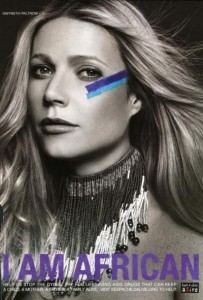 |
In June 1992, the Writers’ Union of Canada adopted a resolution defining the term cultural appropriation as “the taking — from a culture that is not one’s own — of intellectual property, cultural expressions or artifacts, history and ways of knowledge.” Others have limited the definition to appropriation by a dominant culture from a subordinate or colonized culture. Either definition is full of uncertainty. What constitutes a taking? What are the boundaries of a culture? By what criteria is it determined that a culture is not mine but someone else’s?
And it is frequently pointed out that every culture borrows from every other culture it touches. Native Americans play Jamaican reggae music and draw comic books in the Japanese manga style. The band Redbone, whose founding members were of Mexican heritage, constructed their group as belonging to the Native American tradition, and are known for their famous songs in support of the American Indian Movement. Eric Clapton is … well, Eric Clapton.
But here is the problem. Imagine that someone has stolen your identity — that a person you do not know is speaking in your name, even appearing on television as you, saying things about himself — that is, about you — that are untrue and foolish and wrong. And imagine that, when you protest, you are told to be quiet, because that person is you, and you are not.
 |
The true harm of cultural appropriation is thus theft of voice — taking away the right or ability of a group to define itself and represent its own culture. When a dominant culture misrepresents a minority culture, it limits the audience the minority can reach in representing itself. When other cultural groups misrepresent cultures, they steal the religious and cultural meaning of their stories, ceremonies, and beliefs. Even more, when those outsiders claim to speak for indigenous others, they reinforce the stereotype that native people are simple, ignorant, voiceless, unable to speak for themselves without the mediation of the more sophisticated white protector.
Thus, indigenous theologian Vine Deloria, in a talk at the University of Colorado in 1982, said that “the realities of Indian belief and existence have become so misunderstood and distorted at this point that when a real Indian stands up and speaks the truth at any given moment, he or she is not only unlikely to be believed, but will probably be publicly contradicted and ‘corrected’ by the citation of some non-Indian and totally inaccurate ‘expert.’” This appropriation of voice has effects on natives themselves: “More, young Indians in universities are now being trained to view themselves and their cultures in the terms prescribed by such experts rather than in the traditional terms of their tribal elders. The process automatically sets the members of the Indian community at odds with one another.”
 |
Cecil King, director of the Ontario Aboriginal Teacher Education program, puts it this way: “We want to be given the time, money, luxury, and security of academic credibility to define our own constructs from within our own languages and our own worlds and in our own time.” Andrea Smith, a Cherokee activist, says that New Age feminists “trivialize Native American practices so that these practices lose their spiritual power. They who have the white privileges and power make themselves heard at the expense of Native Americans. . . . Our voices are silenced, and consequently the younger generation of Indians who are trying to find their way back to the Old Ways become hopelessly lost in this morass of consumerist spirituality.” And again: “Many white feminists have claimed that Indians are not respecting ‘freedom of speech’ by demanding that whites stop promoting and selling books that exploit Indian spirituality. However, promotion of this material is destroying freedom of speech for Native Americans by ensuring that our voices will never be heard.”
Similarly, the Oneida scholar Pam Colorado says, “The process is ultimately intended to supplant Indians, even in the areas of their own culture and spirituality. In the end, non-Indians will have complete power to define what is and what is not Indian, even for Indians…. When this happens, the last vestiges of real Indian society and Indian rights will disappear.” And such concerns are directed not only at plastic shamans claiming Native American credentials. There has been often bitter dispute about whether — or under what constraints — non-Native scholars and anthropologists should be permitted to teach courses on Indian religion at the university level.
 |
Moreover, popular appropriation of a fantasized native spirituality only diverts attention from real Indians and their struggle for social justice. Andrea Smith, a Cherokee activist and scholar, says that such seekers “want to become only partly Indian. They do not want to be part of our struggles for survival against genocide; they do not want to fight for treaty rights or an end to substance abuse or sterilization abuse. They do not want to do anything that would tarnish their romanticized notions of what it means to become an Indian.” And again: “I understand that a fanciful image of Native people, conveniently located in the past, is less demanding than the reality, but what is truly troubling is how the image continues to be affirmed in a way that is removed from contemporary Native struggles around land rights and sovereignty issues.”
Native American novelist Michael Dorris puts it this way: “For five hundred years Indian people have competed against a fantasy over which they have had no control. They are compared with beings who never really were, yet the stereotype is taken for truth.”
There is a poster of Gwyneth Paltrow with a smear of blue paint on her face and the caption, I am African. Let us say you are a black African, and you see her there — safe, white, coddled, rich beyond your imagining. And all you could say was, The hell you are. And all you could say was, You have reduced the rich beauty of my culture to a smear of paint. And what if no one listened to you, because they were listening to her?

- Previous Post: How Old is Shamanism?
- Next Post: Animism
- More Articles Related to: Indigenous Culture



wastelo wicasa!
huel cualli tlacatl!
Thank you! I like this one a lot!
I think about this issue a lot. You have presented each side well, or perhaps it would be better to say that you allowed them to speak on their own behalf. This is such a painful issue for a lot of people that I am reluctant to say anything at all. I am moved beyond that point at this moment, and what I have to say is this…
The root cause of this problem comes not from people taking someone else’s culture, but from people failing to see that we are all cousins. It is when we think of each other as other that we feel a need to define each other. This cuts the connection between all the people and makes comunication nearly impossible. It is the wound of separation, and so far as I know it can only be heald through recognizing our comon bond, but how can we recognize it and honor it.
I can see even from my limited perspective, people on each side making claims about what the other is doing, and what there motivations are. In this climate, it is very hard to see a path that takes us from a place of othering to a place of mutual understanding and appreciation. For while we are all cousins, we are also ALL different, and that is the way it is supposed to be. It is time to put away the idea that one group is more special than another group. All groups are equally special.
I really do not see a way out of this, unless people on all sides will start listening to each other rather than speaking for each other.
The founding member of Redbone were not all Mexican. The drummer Pete is a registered member of the Confederated Tribes of the Siletz, and he is also Cheyenne. I know this because he is my cousin. Other member were also members of other tribes.